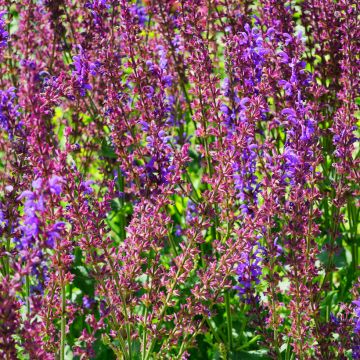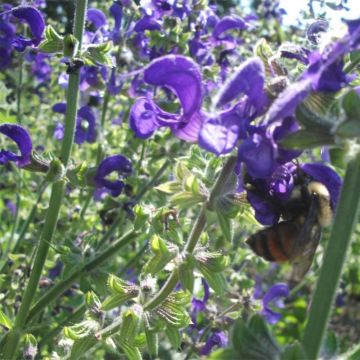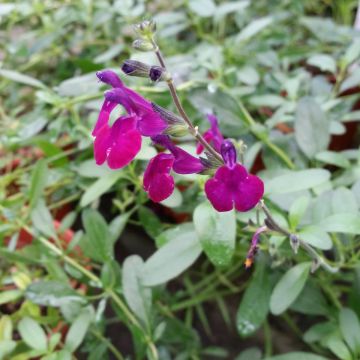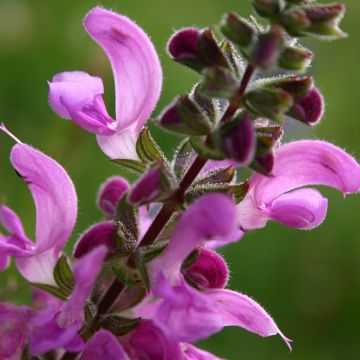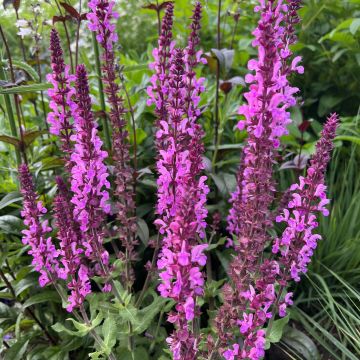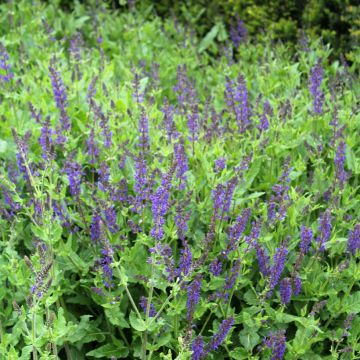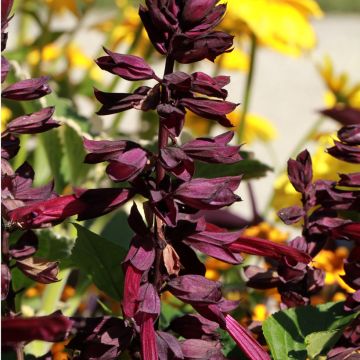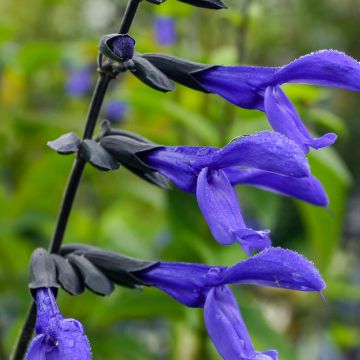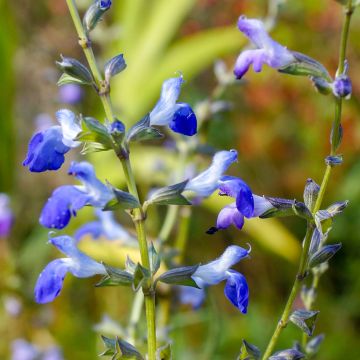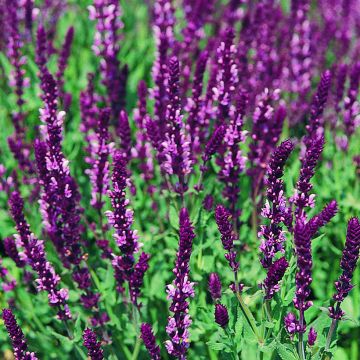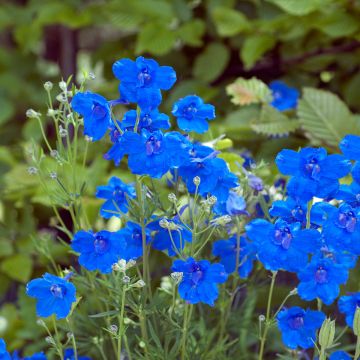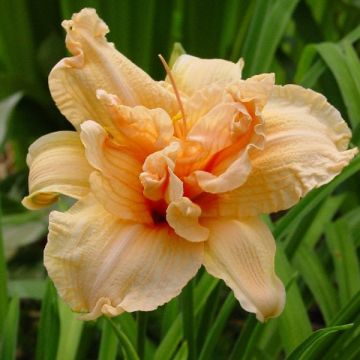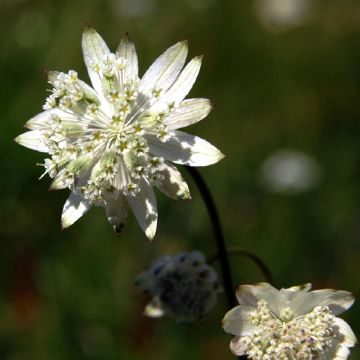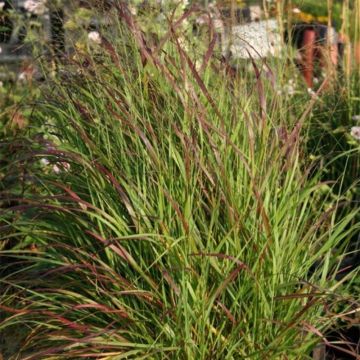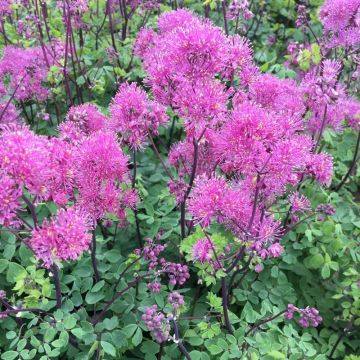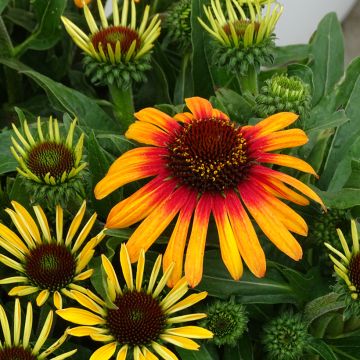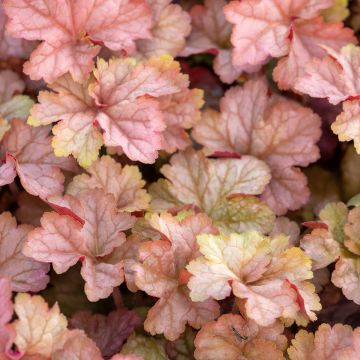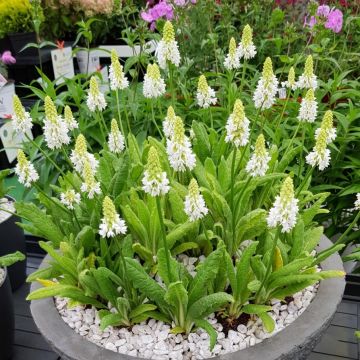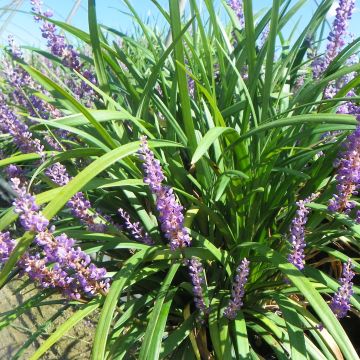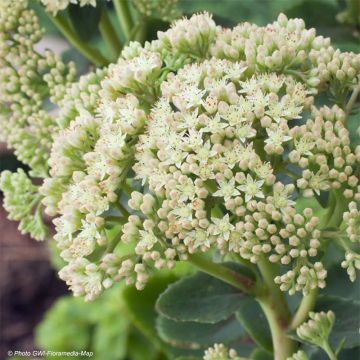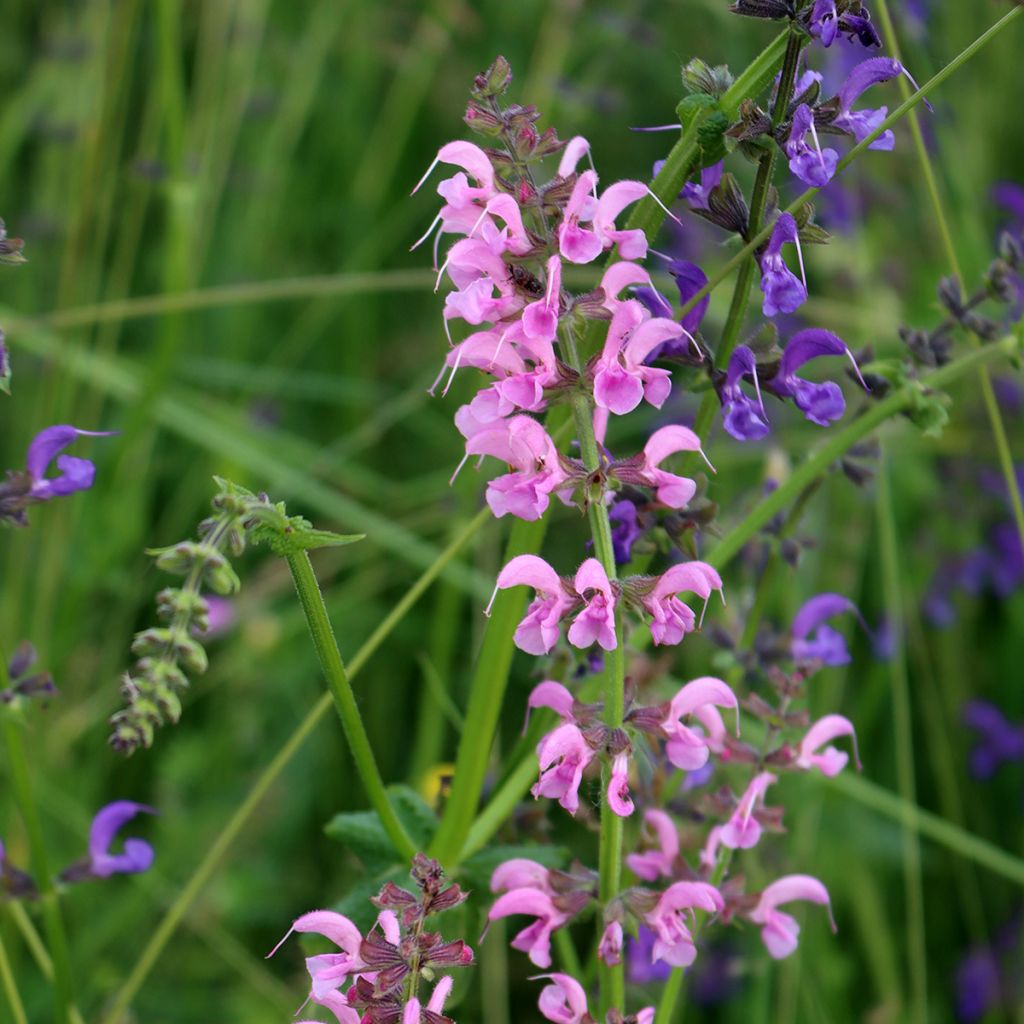

Salvia pratensis Rose Rhapsody - Sauge des près
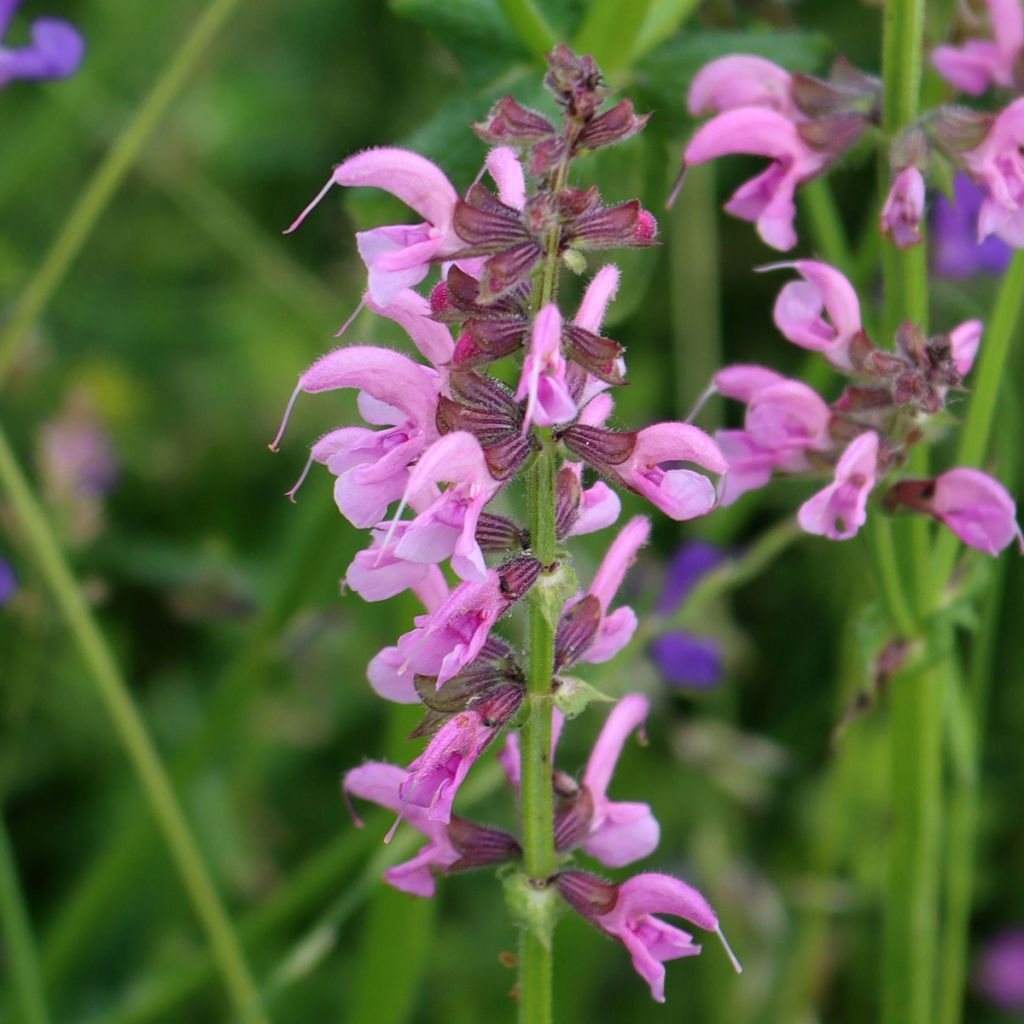

Salvia pratensis Rose Rhapsody - Sauge des près
Salvia pratensis Rose Rhapsody - Meadow Sage
Salvia pratensis Rose Rhapsody
Meadow Sage, Wild Sage, Meadow Clary
This item cannot be shipped to the selected country
Delivery charge from €5.90
More information
Schedule delivery date,
and select date in basket
This plant carries a 12 months recovery warranty
More information
We guarantee the quality of our plants for a full growing cycle, and will replace at our expense any plant that fails to recover under normal climatic and planting conditions.
From €5.90 for pickup delivery and €6.90 for home delivery
Express home delivery from €8.90.
Does this plant fit my garden?
Set up your Plantfit profile →
Description
The Salvia pratensis 'Rose Rhapsody' is a meadow sage selected for its beautiful delicate pink flowering that spreads from spring to summer. This perennial sage is robust, very hardy, undemanding and charming. Bees also appreciate this honey plant that can be placed in sunny flower beds or in a pot on the balcony.
This meadow sage is a perennial species that tolerates both the cold and sun, as well as dry soils. The variety 'Rose Rhapsody' is easy to cultivate, and its flowers are larger and a beautiful pastel pink without any trace of blue. Its leafy stems form a tuft that can measure 40 cm (16in) in diameter. The plant flowers from late May to July, in successive waves, earlier or later depending on the climate. This plant produces numerous multiflorous spike inflorescences, and reaches a height of 50 cm (20in), with bilabiate flowers. They are highly prized by butterflies and bees. The leaves are ovate to oblong, rough, with crenate margins, more or less large, forming a beautiful vegetation. They have an aromatic scent when crushed. This plant is partially deciduous with a rosette of leaves persisting during winter, but the leafy stems not emerging from the ground until spring. This sage tolerates dry soils in summer, which leads it to go into vegetative rest in arid regions during this time of year.
The 'Rose Rhapsody' meadow sage is vigorous enough to eliminate weed competition. Just like its blue ancestor, this plant excels in a meadow garden or on slopes, which helps it to maintain its roots. Deeply anchored, the roots allow this perennial to draw in freshness even when heatwaves strike. It is a very resistant plant, enduring prolonged periods of drought and Spartan growing conditions. This plant tolerates limestone well, even growing on chalky slopes. In a flower bed, associate it with clary sage, common sage, landscape roses or romantic roses, Chinese peonies, Nepeta x faassenii, Lychnis coronaria, germanders,
With over 900 species of annuals, perennials, and soft-wooded shrubs distributed across the globe, except for very cold regions and the tropical forest, the Salvia genus is the richest in the Lamiaceae family. The name Salvia, which dates back to Roman times, derives from the Latin salvus "healthy" in reference to the medicinal properties of common sage.
Report an error about the product description
Salvia pratensis Rose Rhapsody - Meadow Sage in pictures
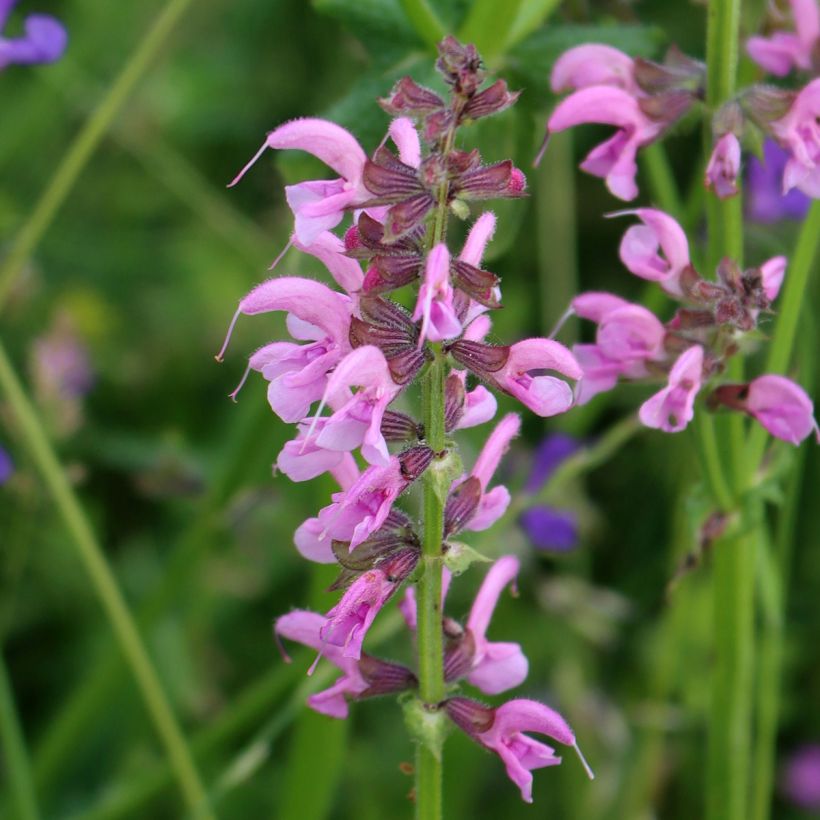

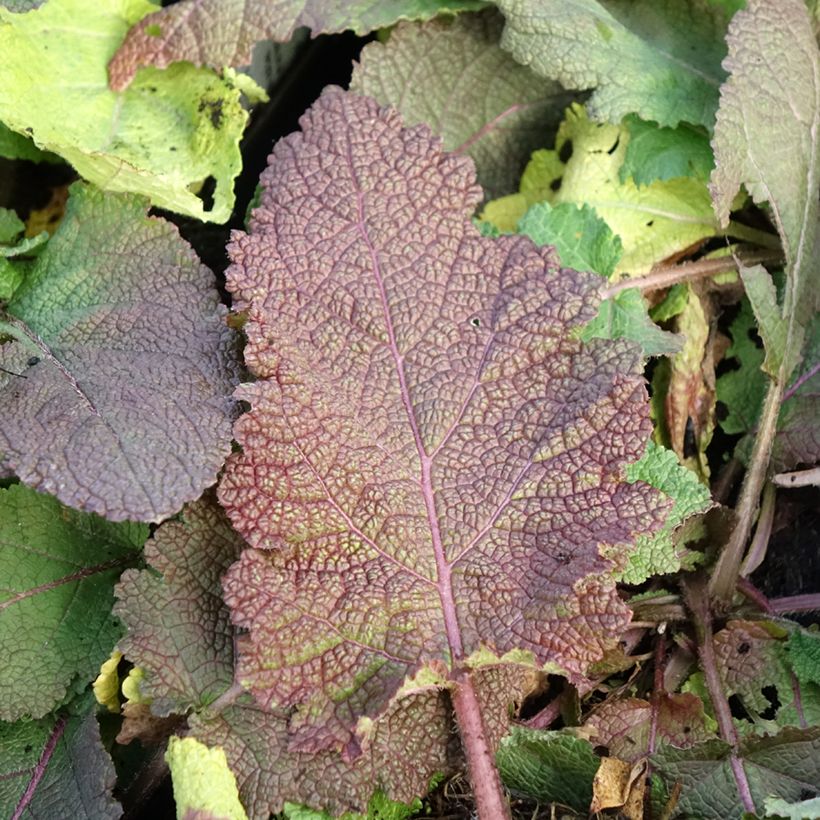

Flowering
Foliage
Plant habit
Botanical data
Salvia
pratensis
Rose Rhapsody
Lamiaceae
Meadow Sage, Wild Sage, Meadow Clary
Cultivar or hybrid
Other Salvia - Sage
Planting and care
Place the Salvia pratensis 'Rose Rhapsody' preferably in a sunny and well-lit location. Plant in ordinary soil as long as it is rich, properly drained, slightly acidic, neutral, or even downright chalky. The meadow sage can tolerate dry conditions in summer, but is sensitive to winter humidity. The flowering abundantly blooms again at the end of the season providing the flower stalkshave been cut just after the first flowering.
Planting period
Intended location
Care
This item has not been reviewed yet - be the first to leave a review about it.
Summer flowering perennials
Haven't found what you were looking for?
Hardiness is the lowest winter temperature a plant can endure without suffering serious damage or even dying. However, hardiness is affected by location (a sheltered area, such as a patio), protection (winter cover) and soil type (hardiness is improved by well-drained soil).

Photo Sharing Terms & Conditions
In order to encourage gardeners to interact and share their experiences, Promesse de fleurs offers various media enabling content to be uploaded onto its Site - in particular via the ‘Photo sharing’ module.
The User agrees to refrain from:
- Posting any content that is illegal, prejudicial, insulting, racist, inciteful to hatred, revisionist, contrary to public decency, that infringes on privacy or on the privacy rights of third parties, in particular the publicity rights of persons and goods, intellectual property rights, or the right to privacy.
- Submitting content on behalf of a third party;
- Impersonate the identity of a third party and/or publish any personal information about a third party;
In general, the User undertakes to refrain from any unethical behaviour.
All Content (in particular text, comments, files, images, photos, videos, creative works, etc.), which may be subject to property or intellectual property rights, image or other private rights, shall remain the property of the User, subject to the limited rights granted by the terms of the licence granted by Promesse de fleurs as stated below. Users are at liberty to publish or not to publish such Content on the Site, notably via the ‘Photo Sharing’ facility, and accept that this Content shall be made public and freely accessible, notably on the Internet.
Users further acknowledge, undertake to have ,and guarantee that they hold all necessary rights and permissions to publish such material on the Site, in particular with regard to the legislation in force pertaining to any privacy, property, intellectual property, image, or contractual rights, or rights of any other nature. By publishing such Content on the Site, Users acknowledge accepting full liability as publishers of the Content within the meaning of the law, and grant Promesse de fleurs, free of charge, an inclusive, worldwide licence for the said Content for the entire duration of its publication, including all reproduction, representation, up/downloading, displaying, performing, transmission, and storage rights.
Users also grant permission for their name to be linked to the Content and accept that this link may not always be made available.
By engaging in posting material, Users consent to their Content becoming automatically accessible on the Internet, in particular on other sites and/or blogs and/or web pages of the Promesse de fleurs site, including in particular social pages and the Promesse de fleurs catalogue.
Users may secure the removal of entrusted content free of charge by issuing a simple request via our contact form.
The flowering period indicated on our website applies to countries and regions located in USDA zone 8 (France, the United Kingdom, Ireland, the Netherlands, etc.)
It will vary according to where you live:
- In zones 9 to 10 (Italy, Spain, Greece, etc.), flowering will occur about 2 to 4 weeks earlier.
- In zones 6 to 7 (Germany, Poland, Slovenia, and lower mountainous regions), flowering will be delayed by 2 to 3 weeks.
- In zone 5 (Central Europe, Scandinavia), blooming will be delayed by 3 to 5 weeks.
In temperate climates, pruning of spring-flowering shrubs (forsythia, spireas, etc.) should be done just after flowering.
Pruning of summer-flowering shrubs (Indian Lilac, Perovskia, etc.) can be done in winter or spring.
In cold regions as well as with frost-sensitive plants, avoid pruning too early when severe frosts may still occur.
The planting period indicated on our website applies to countries and regions located in USDA zone 8 (France, United Kingdom, Ireland, Netherlands).
It will vary according to where you live:
- In Mediterranean zones (Marseille, Madrid, Milan, etc.), autumn and winter are the best planting periods.
- In continental zones (Strasbourg, Munich, Vienna, etc.), delay planting by 2 to 3 weeks in spring and bring it forward by 2 to 4 weeks in autumn.
- In mountainous regions (the Alps, Pyrenees, Carpathians, etc.), it is best to plant in late spring (May-June) or late summer (August-September).
The harvesting period indicated on our website applies to countries and regions in USDA zone 8 (France, England, Ireland, the Netherlands).
In colder areas (Scandinavia, Poland, Austria...) fruit and vegetable harvests are likely to be delayed by 3-4 weeks.
In warmer areas (Italy, Spain, Greece, etc.), harvesting will probably take place earlier, depending on weather conditions.
The sowing periods indicated on our website apply to countries and regions within USDA Zone 8 (France, UK, Ireland, Netherlands).
In colder areas (Scandinavia, Poland, Austria...), delay any outdoor sowing by 3-4 weeks, or sow under glass.
In warmer climes (Italy, Spain, Greece, etc.), bring outdoor sowing forward by a few weeks.

































